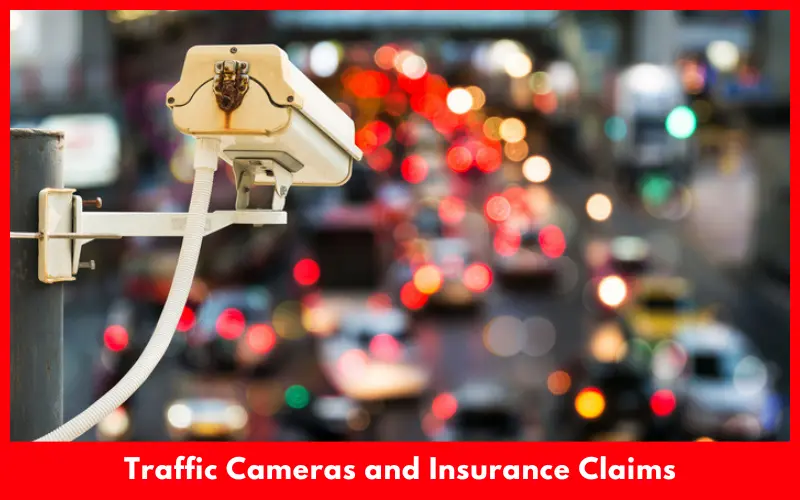The prescription of traffic cameras has without a doubt reshaped road safety over the past few decades. As the number of these devices increases on our streets, they are no longer simply a tool of control and observation, but a vital reconstructive and legal instrument used in the filings of accident claims and law enforcement.
In this article, we review insight into the role of traffic cameras, their operation, how they aid in the reconstruction of an accident and what this means for you as a driver and holder of insurance cover.
Alongside red light cameras, speed cameras and intersection monitors, traffic cameras have not only come to assist traffic police by monitoring road conditions and traffic flow, but they are also becoming a crucial part of the legal framework for assigning blame in accident cases.
What they do and why, as well as their legal status, could alter the way we experience and interact with safety on the road.
Article Summary
How Traffic Cameras Work
They watch over intersections and country roads, keeping hysterical traffic free of hysteria. They watch from bridges and roundabouts, and from holes dug in the grass at intersections.
Some are zoom cameras recording speeders; others are red-light cameras catching timid souls who, in a fateful moment of woe, turn their dumb will to risk. However, some simply record traffic in panorama at intersections.
They work, and they do it well. Sending data to authorities all the time, these devices use sensors and imaging technology to collect important information from the road and record the most crucial moments on it.
Traffic cameras record vehicle movements and other aspects of the roadway that are crucial to an automobile accident reconstruction, such as angles of impact, deflection patterns of vehicles, and roadway conditions,’ explain the Chicago accident attorneys at TPMB.
To help us understand how these invaluable devices function, beyond being means of spying, it is important to familiarise ourselves with the way they work.
The Role of Traffic Cameras in Accident Investigation
Besides being a tool for monitoring, traffic cameras are invaluable assets in the event of an accident in re-constructing exactly what happened. Cameras, themselves mute witnesses, are indispensable for providing evidence regarding red-light violations, speeding, or distracted driving.
Analyze that footage and investigators can determine what vehicle did (or did not) do what and when a timeline of events if you will that might assign fault but could also provide the kind of proof that could change the outcome of an insurance claim or legal case.
In short, traffic cameras transform opportunity into truth accidental car crashes are suddenly clear, on-the-record evidence, the kind of clarity amidst ambiguity that ensures a level playing field for all concerned.
Traffic Cameras and Insurance Claims
When claiming on an insurance policy, presenting clear evidence of what happened (and who was to blame) is crucial. In this context, traffic camera footage is especially useful – objective visual evidence of what happened makes claims far more credible and can speed up adjudication.

Imagine that a contested collision at an intersection is settled quickly when the correct sequence of events is completely clear cut on the video that records every car that goes through the intersection.
If your side is right, you will settle more quickly; if wrong, admitting culpability will not be as costly and, in the case of massively coverage areas, prices paid for insurance could decline.
If you are a driver, awareness that the cameras exist should underscore that you should not only follow the traffic rules but also be especially alert at intersections. You never know when you too will find yourself in the crosshairs of one of them.
Privacy Concerns and Legal Implications
Next to the advantages of the improved traffic and of having better control in investigation of traffic related crimes, issues such as privacy concern and surveillance are naturally brought up by those against the widespread use of traffic cameras.
Opponents of the cameras accuse them of violating the citizens’ privacy rights by transferring the surveillance over them from the secret service to their everyday life without their agreement.
Such concerns are mitigated by strict rules governing footage captured by traffic cameras. Data protection laws specifying how this highly sensitive information can be collected, stored and accessed ensure that individuals’ rights to privacy are protected. Cameras and data are often subject to highly transparent policies around their deployment, which also helps to allay fears that no-one is checking in on these systems to monitor our personal behavior.
Finding the right blend of better road safety and privacy is a balancing act never quite settled by legislators and law enforcement alike, as they continue to update policies to suit the changing expectations of society and the evolution of technology.
Pillars of Modern Road Safety Infrastructure
In summary, traffic cameras are a vital piece of modern road infrastructure with a wide range of functions, including accident prevention, investigation and adjudicating insurance claims.
Their ability to capture critical moments can benefit not only the process of reconstructing an accident but also to embolden valid insurance claims which should lead to a speedier resolution and possible reduction of insurance premiums.
Though their presence makes roads safer, concerns about privacy and surveillance have to be weighed against the public good of increased accountability; counterbalanced with sensible deployment and strong data safeguards.
With careful navigation of these barriers, the full potential of traffic cameras can be kept intact, paving the way for safer roads, and safer outcomes for motorists overall.
Endnote
Looking forward, we need to stay aware of how traffic cameras are being used in our communities and continue to push for their proper and responsible use, as well as how that technology is refined in line with the expectations of privacy that we hope for in the smart-city-surveillance landscape that is quickly becoming reality.

